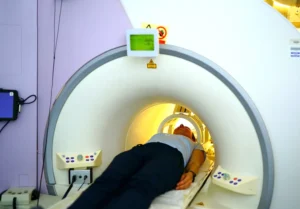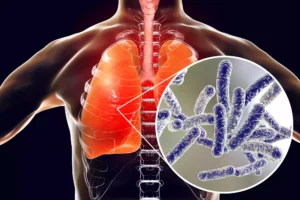
According to a new study from the American Cancer Society, cancer cases among men are expected to increase by 84 percent by 2050.
Rising Cancer Rates Among Men

A recent study warns that men will be increasingly vulnerable to cancer, with the situation expected to worsen by 2050.
The study, titled “Burden of 30 cancers among men,” was conducted by the American Cancer Society in 2022 and examined 30 types of cancer in men from 185 countries. Using population-based estimates and projections of human development, the study predicted a significant rise in cancer cases and deaths among men worldwide.
Alarming Statistics
The findings are sobering: by 2050, the number of cancer cases among men is expected to jump from 10.3 million to 19 million—an 84 percent increase. Even more concerning, deaths are projected to nearly double, rising from 5.4 million to 10.5 million, representing a 93 percent increase.
The most significant mortality increases are expected among men aged 65 and older, particularly in regions with lower levels of human development.
Risk Factors and Vulnerable Populations

The study highlights that men in low-income countries and regions with lower life expectancy are more likely to experience a surge in cancer-related deaths.
However, the risk is not solely tied to income and life expectancy. The study also points to lifestyle factors such as smoking and alcohol consumption as contributors to the rising cancer rates. In 2020, it was estimated that 32.6 percent of men smoked, compared to just 6.5 percent of women. Men are also more likely to be exposed to carcinogens in the workplace.
Moreover, there are more female-specific cancer screening programs than male-specific ones, which may contribute to the disparity in cancer outcomes between men and women.
Leading Causes of Cancer Deaths
Lung cancer is predicted to remain the leading cause of cancer deaths among men by 2050. Additionally, mesothelioma is expected to become the most diagnosed cancer, while prostate cancer is projected to be the leading cause of cancer-related deaths.
Recommendations for Improvement
The study suggests several measures to improve these grim projections, including expanding access to universal healthcare, fostering global collaborations in the healthcare sector, and enhancing healthcare infrastructure.
Early-Onset Cancers on the Rise

In a related trend, researchers have observed a significant increase in cancer cases among adults under 50. According to a study published in Nature Reviews Clinical Oncology, cancers such as breast, colon, esophagus, kidney, liver, and pancreas have been on the rise since the 1990s.
Generational Shifts in Cancer Risk
Dr. Shuji Ogino, a professor and physician-scientist, noted that the data suggests a “birth cohort effect,” indicating that each successive generation is at a higher risk of developing cancer earlier in life due to various risk factors encountered at a young age.
For example, individuals born in 1960 are at a higher risk of developing cancer before age 50 compared to those born in 1950. This trend is expected to continue with future generations.
Contributing Factors

The study points to several risk factors contributing to this trend, including diet, weight, lifestyle, environmental exposures, and changes in the human microbiome. Researchers stress the need for more data on individual exposures to better understand and address this growing issue.
Legionnaires’ Disease Outbreak in New Hampshire

In other health news, five people in New Hampshire were diagnosed with Legionnaires’ disease after possible exposure to contaminated water droplets from a cooling tower.
Details of the Outbreak

The New Hampshire Department of Health and Human Services (DHHS) announced that the cases were linked to a cooling tower behind the RiverWalk Resort in Lincoln, N.H., which tested positive for Legionella bacteria. The bacteria can cause Legionnaires’ disease, a severe form of pneumonia.
Response and Precautions

The resort has been working closely with state officials to address the contamination, and initial tests suggest that remediation efforts have been successful. However, the cooling tower remains operational, and there may still be a risk of exposure, particularly for people within a half-mile of the location.
Health Warnings
State Epidemiologist Dr. Benjamin Chan advised individuals who have visited the area to monitor themselves for symptoms, which can include fever, muscle aches, cough, shortness of breath, and chest pain. Anyone experiencing these symptoms within 14 days of potential exposure should seek medical attention.
The Mayo Clinic notes that symptoms of Legionnaires’ disease usually develop two to 10 days after exposure to the bacteria.
This article highlights the critical need for continued vigilance and action in addressing both chronic health conditions like cancer and acute outbreaks like Legionnaires’ disease.



